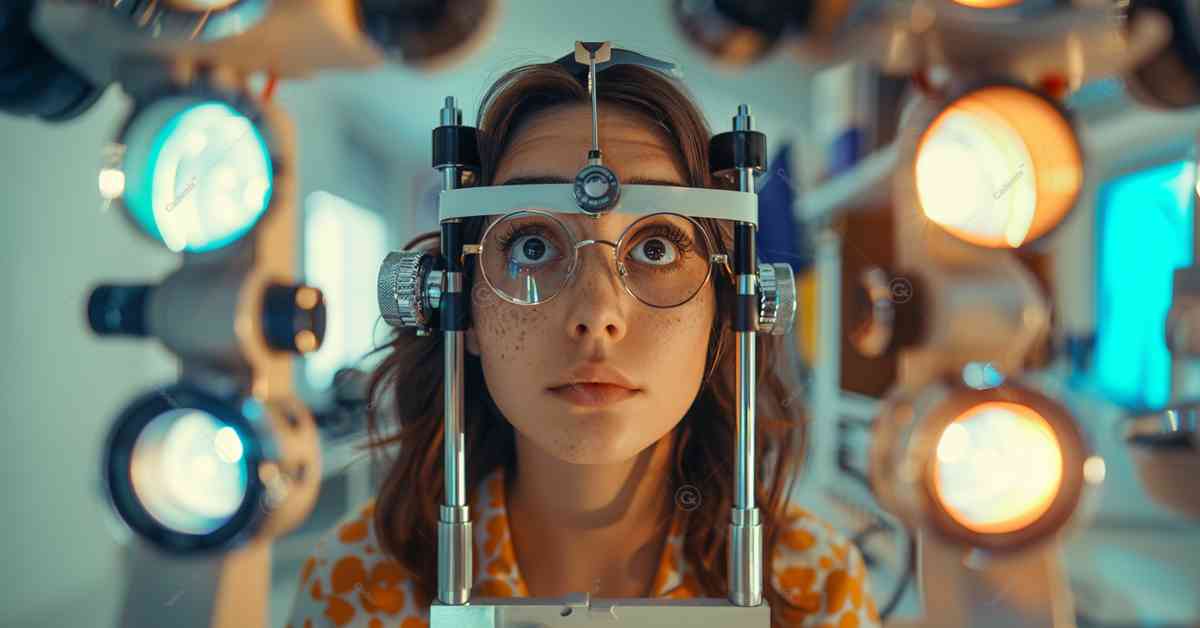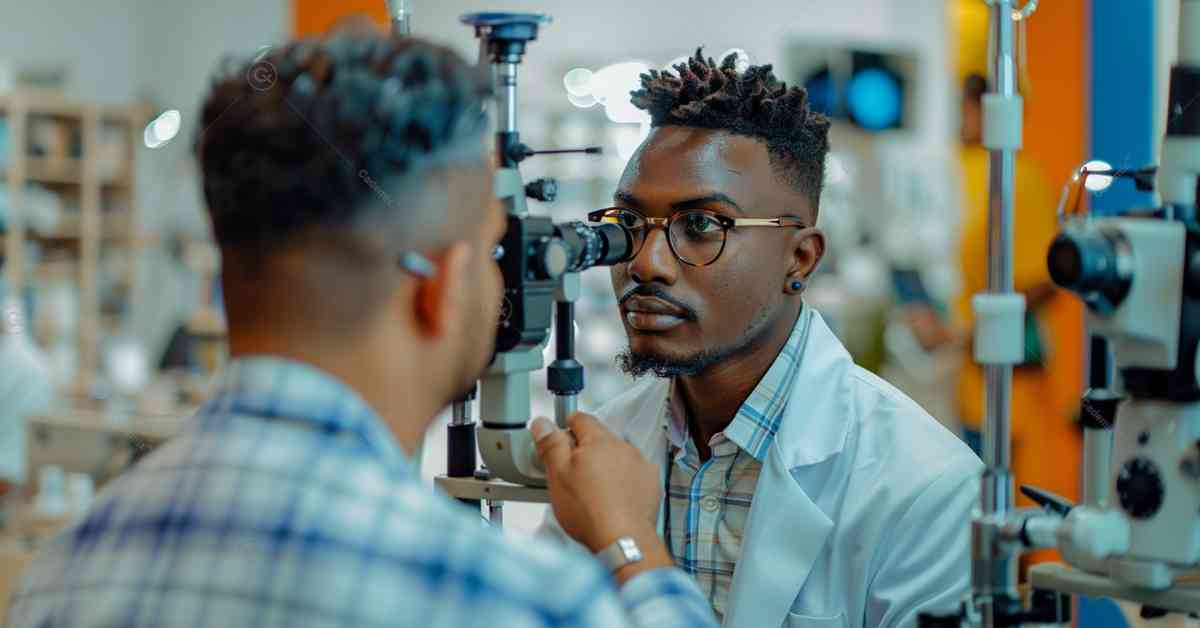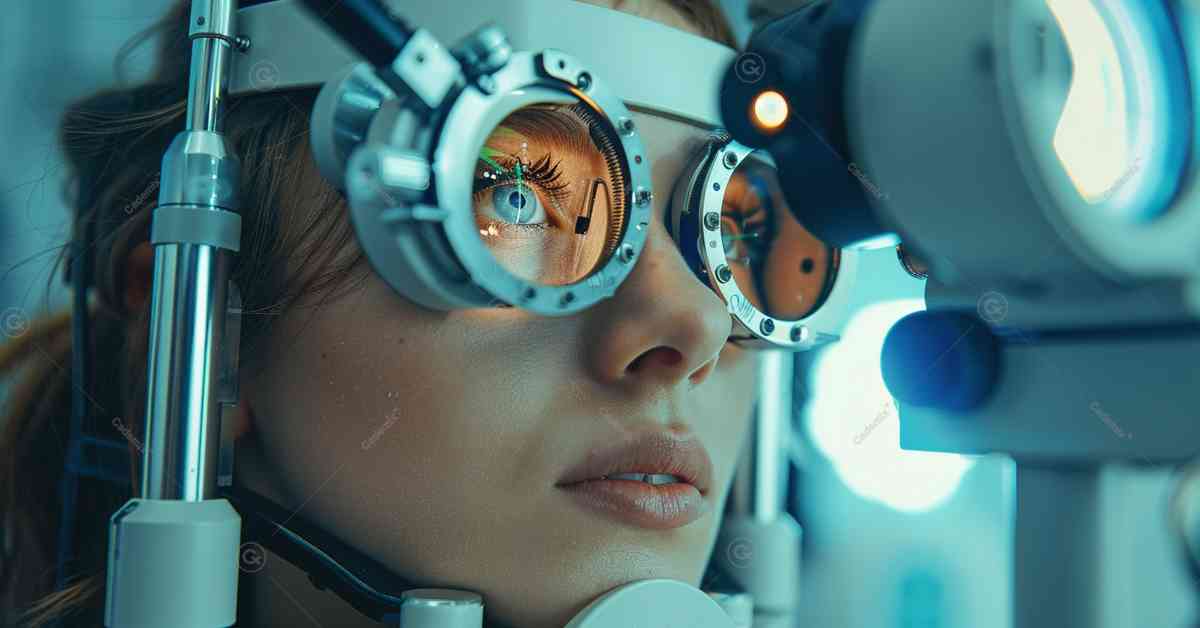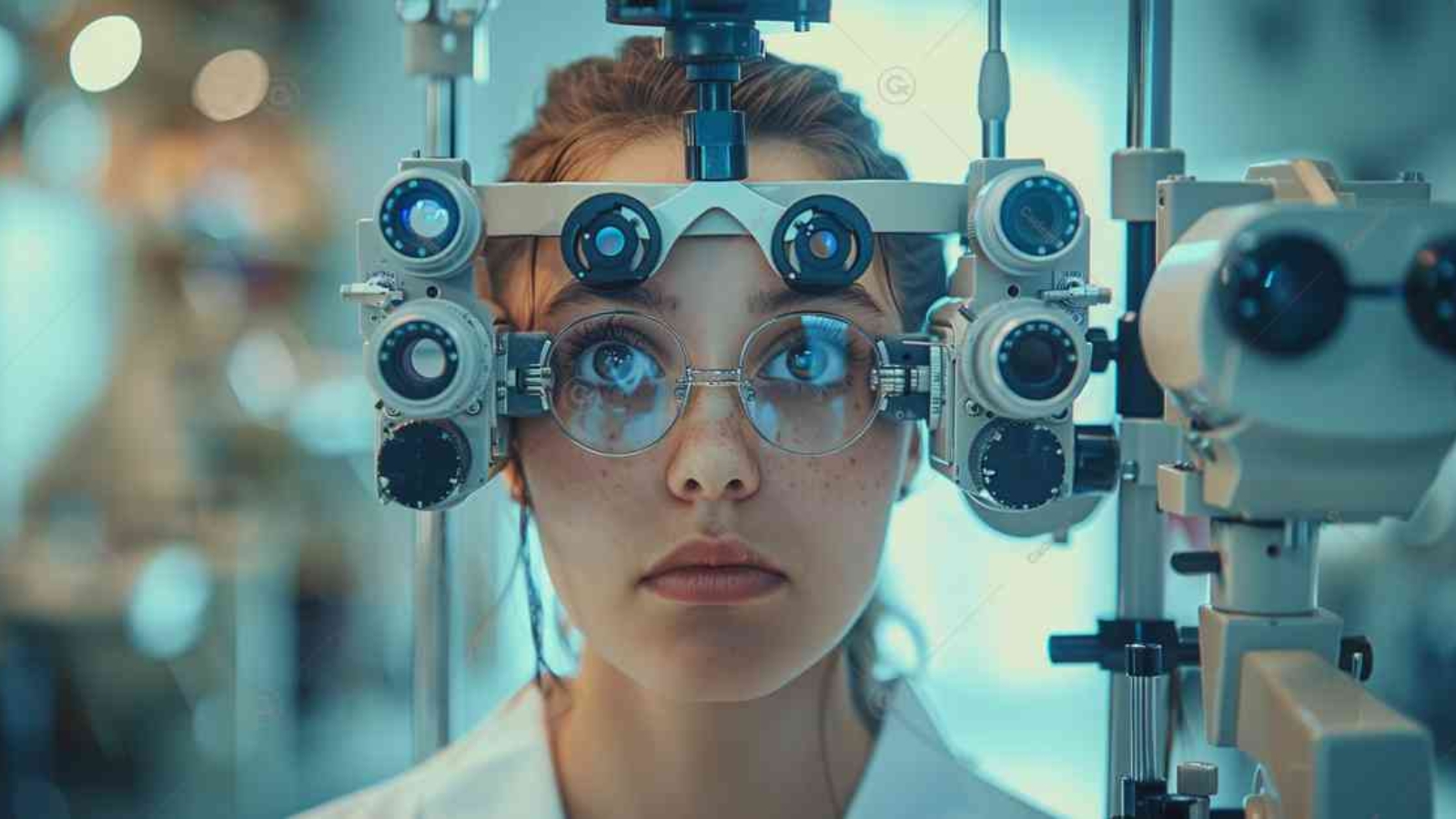A phoropter is a critical instrument in the field of optometry used to measure refractive error and determine eyeglass prescriptions. This comprehensive guide delves into the function, significance, and advancements in phoropter technology, as well as its role in optometric practice and career opportunities in this field.
Keywords: phoropter, optometry, eye measurement, refractive error, eyeglass prescription, optometric instruments, optometrist careers, eye examination.
Understanding the Phoropter
What is a Phoropter?
A phoropter is an ophthalmic testing device, commonly used by optometrists, to measure an individual’s refractive error and determine their eyeglass prescription. The device is designed with multiple lenses that can be rotated into place to refine vision tests. It helps in assessing how light refracts through the eye to determine the precise lens power needed for corrective lenses.
Phoropters are essential for diagnosing conditions such as myopia (nearsightedness), hyperopia (farsightedness), astigmatism, and presbyopia. By adjusting the lenses and measuring the patient’s response, optometrists can identify the optimal lens power to correct vision deficiencies.

Historical Development of Phoropters
The phoropter has evolved significantly since its inception in the early 20th century. The earliest versions were simple devices with limited functionality, primarily used to test visual acuity. Over time, advancements in optical engineering and materials have led to more sophisticated and accurate instruments.
Modern phoropters are highly versatile, offering a range of lenses and settings to conduct comprehensive eye exams. They incorporate advanced features such as digital readouts, automated adjustments, and connectivity with other diagnostic tools, enhancing the precision and efficiency of eye examinations.
Function and Use of Phoropters
How a Phoropter Works
A phoropter works by presenting different lenses to the patient’s eyes and measuring their visual response. The optometrist will typically start with a preliminary examination to estimate the refractive error. This initial assessment guides the selection of lenses to be used in the phoropter.
The patient looks through the phoropter at a visual target, usually an eye chart, while the optometrist changes the lenses. The patient is asked to compare the clarity of vision between different lens combinations. This process, known as subjective refraction, helps determine the most effective lens power to correct the patient’s vision.
Steps in Using a Phoropter
- Preliminary Assessment: Conduct an initial eye exam to estimate the patient’s refractive error.
- Positioning: Adjust the phoropter to align with the patient’s eyes.
- Lens Adjustment: Rotate different lenses into place and ask the patient to compare clarity.
- Refinement: Fine-tune the lens power based on the patient’s feedback.
- Verification: Confirm the final prescription with additional tests, if necessary.
Using a phoropter requires skill and experience to interpret the patient’s responses accurately. Optometrists must be adept at managing the device and ensuring that the lenses are correctly aligned for precise measurements.
Types of Phoropters
Manual Phoropters
Manual phoropters are the traditional type, operated by the optometrist through mechanical adjustments. These devices allow for precise control over the lens selection and positioning. They are durable, reliable, and widely used in many optometric practices.
Manual phoropters require a high level of skill to operate effectively. The optometrist must manually change lenses, adjust settings, and interpret the patient’s feedback. Despite the advent of automated devices, manual phoropters remain popular due to their robustness and precision.
Digital Phoropters
Digital phoropters represent the latest advancement in optometric technology. These devices feature automated lens changes, digital readouts, and connectivity with electronic health records (EHR) systems. Digital phoropters enhance the efficiency and accuracy of eye exams by reducing manual intervention.
With digital phoropters, optometrists can perform faster and more comprehensive exams. The devices can store and recall previous measurements, integrate with other diagnostic tools, and provide detailed reports. This technology streamlines the examination process and improves patient outcomes.
Advancements in Phoropter Technology
Integration with Diagnostic Tools
Modern phoropters are often integrated with other diagnostic instruments, such as autorefractors, keratometers, and retinal imaging systems. This integration allows for a more comprehensive assessment of the patient’s visual health. Data from multiple sources can be combined to create a detailed picture of the eye’s condition.

Automated Refraction Systems
Automated refraction systems, which include digital phoropters, have transformed optometric practice. These systems use advanced algorithms to perform refractions quickly and accurately. Automated systems reduce the need for manual adjustments and minimize the potential for human error.
These systems can also store and analyze patient data over time, enabling optometrists to monitor changes in vision and adjust prescriptions as needed. The use of automated refraction systems enhances the precision and reliability of eye exams.
Portable Phoropters
Portable phoropters are a recent innovation designed to provide eye care in remote or underserved areas. These devices are lightweight, compact, and easy to use, making them ideal for fieldwork and mobile clinics. Portable phoropters ensure that high-quality eye exams can be conducted anywhere, improving access to eye care services.
Essential Skills for Using a Phoropter
Technical Proficiency
Operating a phoropter requires technical expertise and familiarity with its various functions. Optometrists must understand how to select and adjust lenses, interpret visual responses, and ensure accurate alignment. Mastery of these technical skills is crucial for performing precise and effective eye exams.
Patient Communication
Effective communication is essential for gathering accurate information from patients. Optometrists must explain the examination process clearly and ask specific questions to gauge the patient’s visual experience. Building rapport with patients encourages honest feedback, which is vital for determining the correct prescription.
Diagnostic Interpretation
Interpreting the results of a phoropter exam requires a deep understanding of ocular physiology and refractive errors. Optometrists must analyze the patient’s responses and integrate them with other diagnostic data to make informed decisions about treatment. This analytical skill is key to providing high-quality eye care.

Career Opportunities in Optometry
Private Practice
Many optometrists choose to establish their own private practices, offering personalized eye care services to their communities. Owning a practice allows optometrists to set their schedules, choose their equipment, and build lasting relationships with patients. Private practice can be financially rewarding and professionally fulfilling.
Healthcare Institutions
Optometrists also find opportunities in hospitals, clinics, and specialized eye care centers. Working in a healthcare institution provides access to a wider range of diagnostic tools and collaboration with other healthcare professionals. This environment is ideal for optometrists who enjoy working in multidisciplinary teams.
Academia and Research
For those interested in education and research, academic institutions offer careers in teaching and scientific investigation. Optometry schools and universities need experienced practitioners to educate future optometrists. Research opportunities allow optometrists to contribute to advancements in eye care and vision science.
Services for Job Seekers in Optometry
Skill Development and Presentation
Our services include training in the latest optometric technologies and best practices, ensuring you stay updated with industry advancements. We offer workshops on effectively presenting your technical expertise to employers. This includes crafting compelling resumes, preparing for technical interviews, and showcasing practical experience with optometry instruments like phoropters.
Our resume workshops focus on highlighting your skills and experience in a professional manner. Learn how to emphasize your expertise in using phoropters and other diagnostic tools, making your resume stand out to potential employers. We also provide mock interviews to help you practice discussing your technical abilities confidently.

Networking and Mentorship
We facilitate networking opportunities with industry professionals and mentors. These connections can provide valuable insights into the job market, help you understand employer expectations, and offer guidance on career development. Our mentorship programs pair you with experienced optometrists and industry experts who can provide personalized advice and support.
Networking events and professional conferences are excellent opportunities to meet potential employers and colleagues. Our services help you navigate these events, make meaningful connections, and leverage your network for career advancement. Mentorship provides ongoing support and guidance as you build your career in optometry.
Consulting Services for Optometrists and Small Businesses
Consulting for Optometrists
For newly graduated optometrists, we offer career consulting sessions that include resume reviews, interview coaching, and job search strategies. Our experts can help you identify opportunities that align with your skills in optometry and other areas of eye care. We also provide advice on continuing education and certification programs to enhance your qualifications.
Our career consulting sessions are tailored to your individual needs and goals. Whether you are seeking your first job or looking to advance your career, our consultants provide personalized guidance and support. We help you navigate the job market, prepare for interviews, and develop a career plan that aligns with your aspirations.
Business Services for Optometry Practices
For small businesses, we provide consulting services to optimize your practice operations. This includes guidance on selecting and implementing optometric instruments, training staff, and improving patient care workflows. Our consultants can help you develop business strategies, marketing plans, and financial management practices to ensure the success and growth of your optometry practice.
Optimizing practice operations involves streamlining administrative processes, enhancing patient experiences, and maximizing efficiency. Our consultants work with you to identify areas for improvement and implement solutions that drive success. By leveraging our expertise, you can achieve sustainable growth and provide high-quality care to your patients.
To learn more about our services and schedule a consulting session, please visit our website or contact us directly.

Leading Companies in Phoropter Manufacturing
Topcon Corporation
Topcon Corporation is a global leader in the field of ophthalmic equipment. They produce a wide range of optometric instruments, including phoropters, autorefractors, slit lamps, and digital imaging systems. Topcon’s commitment to innovation and quality makes them a trusted name in optometry.
Topcon’s products are designed to enhance diagnostic accuracy and improve patient care. Their advanced imaging systems provide detailed views of ocular structures, aiding in the diagnosis and management of eye conditions. For more information, visit Topcon Healthcare.
Carl Zeiss Meditec AG
Carl Zeiss Meditec AG is another prominent player in the optometry market. Known for their precision optics, Zeiss offers state-of-the-art optometric equipment that provides highly accurate measurements. Their products are widely used in both clinical and research settings, making significant contributions to the advancement of eye care.
Zeiss’s innovative technologies include optical coherence tomography (OCT) and advanced fundus cameras, which provide detailed images of the retina. These tools are essential for diagnosing and monitoring retinal diseases. For more information, visit Zeiss Medical Technology.
NIDEK Co., Ltd.
NIDEK is a leading manufacturer of diagnostic equipment for ophthalmology and optometry. Their instruments are known for their reliability and accuracy. NIDEK’s continuous innovation and focus on user-friendly technology have made their products a staple in optometric practices worldwide.
NIDEK’s product lineup includes autorefractors, lensmeters, and retinal imaging systems. Their commitment to quality and innovation has earned them a strong reputation in the eye care industry. For more information, visit NIDEK.
Canon Medical Systems
Canon Medical Systems produces a variety of advanced medical devices, including optometric instruments. Their technology integrates imaging and diagnostic capabilities, providing comprehensive tools for eye care professionals. Canon’s reputation for high-quality imaging equipment extends to their optometry products.
Canon’s optometric solutions include digital fundus cameras and optical coherence tomography (OCT) systems, which provide detailed images of ocular structures. These tools are essential for diagnosing and managing eye diseases. For more information, visit Canon Medical Systems.
Reichert Technologies
Reichert Technologies, a part of AMETEK, Inc., is renowned for its innovative ophthalmic and optometric instruments. Reichert has been a pioneer in the development of phoropters, lensmeters, and tonometers. Their products are designed to deliver precise measurements and enhance the diagnostic capabilities of eye care professionals.
Reichert’s phoropters are known for their durability, accuracy, and ease of use. The company’s ongoing commitment to research and development ensures that their instruments remain at the forefront of optometric technology. For more information, visit Reichert Technologies.
Marco Ophthalmic
Marco Ophthalmic is a leading manufacturer of diagnostic and examination equipment for eye care professionals. Their product line includes advanced phoropters, autorefractors, slit lamps, and digital refraction systems. Marco’s instruments are designed to streamline the eye examination process and improve patient care.
Marco’s commitment to quality and innovation has made them a trusted name in the optometry industry. Their phoropters are known for their precision, reliability, and user-friendly design. For more information, visit Marco Ophthalmic.
The Importance of Phoropters in Optometry
Diagnostic Accuracy
Phoropters play a crucial role in ensuring diagnostic accuracy in optometry. By providing precise measurements of refractive errors, phoropters help optometrists prescribe the correct lenses for patients. Accurate prescriptions are essential for improving visual acuity and enhancing the overall quality of life for patients.
In addition to determining refractive errors, phoropters can also aid in diagnosing other eye conditions. By thoroughly assessing how light is refracted through the eye, optometrists can detect early signs of conditions such as keratoconus or irregular astigmatism. Early detection and intervention are key to preventing further deterioration of vision.
Patient Experience
Phoropters contribute significantly to the patient experience during eye exams. Modern phoropters are designed to be comfortable and easy to use, ensuring that patients can provide accurate feedback. The ability to quickly and smoothly switch between lenses minimizes patient discomfort and streamlines the examination process.
Moreover, phoropters with advanced features such as digital readouts and automated adjustments enhance the efficiency of eye exams. Patients benefit from faster, more accurate measurements, reducing the overall time spent in the examination chair. Improved patient experience leads to higher satisfaction and better compliance with prescribed treatments.
The Role of Phoropters in Comprehensive Eye Exams
Assessing Visual Acuity
Visual acuity assessment is a fundamental component of comprehensive eye exams. Phoropters are instrumental in determining the sharpness and clarity of a patient’s vision. By presenting various lenses, optometrists can identify the best correction for each eye, ensuring that patients achieve optimal visual acuity.
This process involves comparing the clarity of vision through different lenses and making incremental adjustments to refine the prescription. Accurate visual acuity assessments are crucial for diagnosing refractive errors and prescribing effective corrective lenses.
Evaluating Binocular Vision
Phoropters are also used to evaluate binocular vision, which is the ability of both eyes to work together effectively. Binocular vision assessments help diagnose conditions such as strabismus (misalignment of the eyes) and amblyopia (lazy eye). These conditions can affect depth perception and overall visual function.
By using specialized lenses and prisms, optometrists can measure how well the eyes coordinate and align. Detecting and treating binocular vision problems early is essential for preventing long-term visual impairment and ensuring that patients maintain healthy vision.

The Future of Phoropter Technology
Digital and Automated Innovations
The future of phoropter technology lies in digital and automated innovations. Digital phoropters with automated lens changes and advanced diagnostic capabilities are becoming increasingly prevalent. These devices offer enhanced precision, faster measurements, and improved patient comfort.
Automated phoropters can store and analyze patient data, providing valuable insights into visual trends and changes over time. Integration with electronic health records (EHR) systems allows for seamless data management and sharing, improving the continuity of care.
Teleoptometry and Remote Exams
Teleoptometry, the practice of conducting eye exams remotely, is an emerging trend that will shape the future of optometry. Portable and digital phoropters are essential tools for teleoptometry, enabling optometrists to perform accurate refractions and eye exams from a distance.
Teleoptometry expands access to eye care, particularly in underserved or remote areas. By utilizing advanced phoropter technology, optometrists can deliver high-quality care to patients regardless of their location. This approach enhances the reach and efficiency of optometric services.
Conclusion
Phoropters are indispensable tools in the field of optometry, essential for accurate diagnosis and effective treatment of refractive errors. The advancements in phoropter technology have significantly improved the precision and efficiency of eye exams, benefiting both optometrists and patients. The future of phoropter technology promises further innovations that will continue to enhance the practice of optometry.
For those pursuing a career in optometry, proficiency in using phoropters and other diagnostic instruments is crucial. Our services for job seekers and consulting for optometry practices can help you achieve success in this rewarding field.
To learn more about our services and schedule a consulting session, please visit our website or contact us directly.
For more detailed information, visit the American Academy of Optometry and the National Eye Institute.
Relevant Key Phrases and Keywords: phoropter, optometry, eye measurement, refractive error, eyeglass prescription, optometric instruments, optometrist careers, eye examination, Topcon Corporation, Carl Zeiss Meditec AG, NIDEK Co., Ltd., Canon Medical Systems, Reichert Technologies, Marco Ophthalmic.

